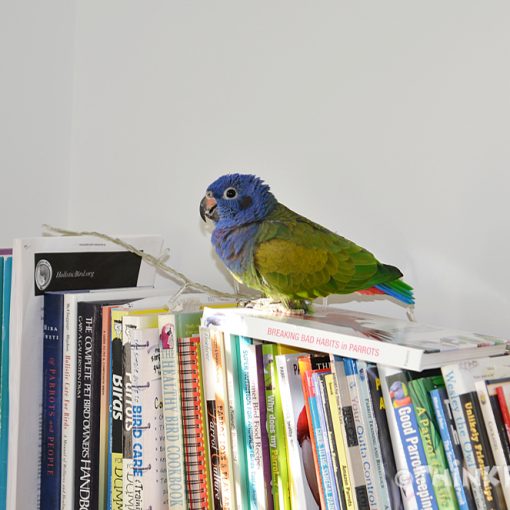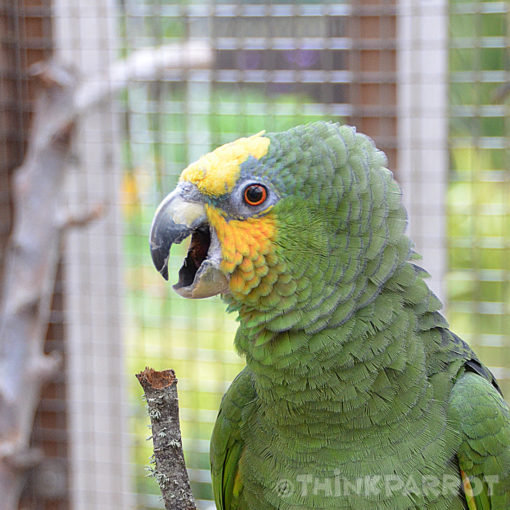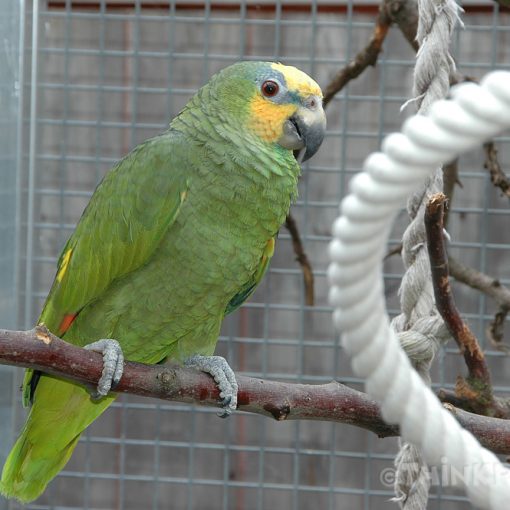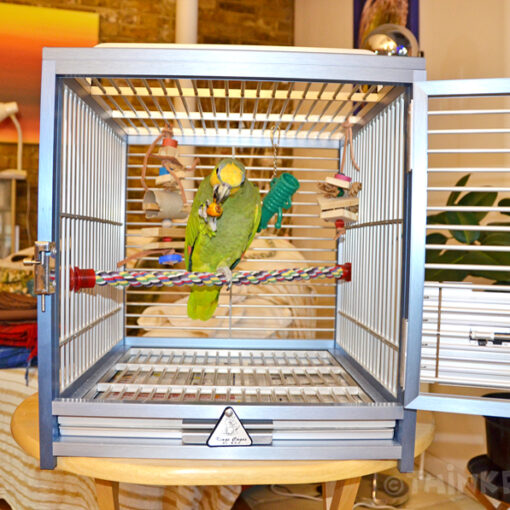In the wild, parrots bathe in the rain, dripping leaves, pools or streams, so we should try to replicate that in captivity. Bathing is important for skin and feather condition. Bathing, showering, misting helps dislodge debris, dust and loose feathers, plus it keeps dander down which can benefit the respiratory system. Brittle, dry feathers can cause feather destructive behaviour whereas wet feathers encourage healthy preening – zipping the feather barbs together again. Plus bathing/showering is a great source of enrichment!
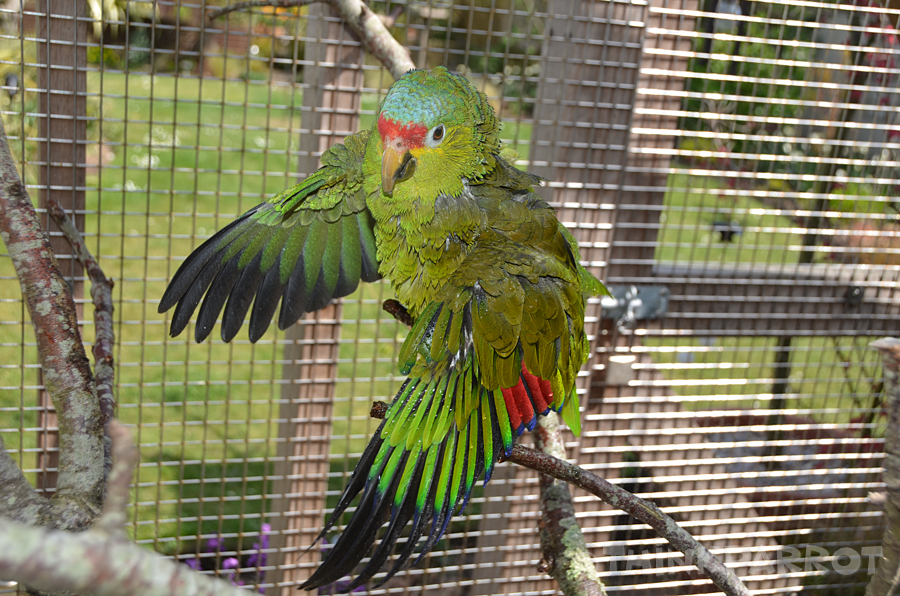
Water
Plain water or water with the addition of a few drops of organic apple cider vinegar is ideal. Personally I like to use filtered, bottled or distilled water (distilled water should not be used for drinking as it is devoid of important minerals like calcium and magnesium). Aloe Vera tends to coat the feathers which builds up over time. If you have to use Aloe, allow for plain showers/baths too, to help remove the coating. Soap or detergent is usually best avoided as it will dry out the skin and feathers, as can preparations/sprays containing alcohol.
Temperature
Different parrots like different temperatures of water – experiment to see which is preferable for your individual bird. I tend to fill the spray bottle with hot water in the winter so that the spray comes out tepid, and in the summer I use cold water.
If choosing a spray bottle, thoroughly clean it beforehand and then only use that particular bottle for your bird. Label it! I buy trigger spray bottles with chemical resistant heads for cars (either 1 litre or 750ml) from eBay, because I find being heavy duty they last for ages and have a good spray. They can have different coloured nozzles so you can choose one to suit your particular parrot.
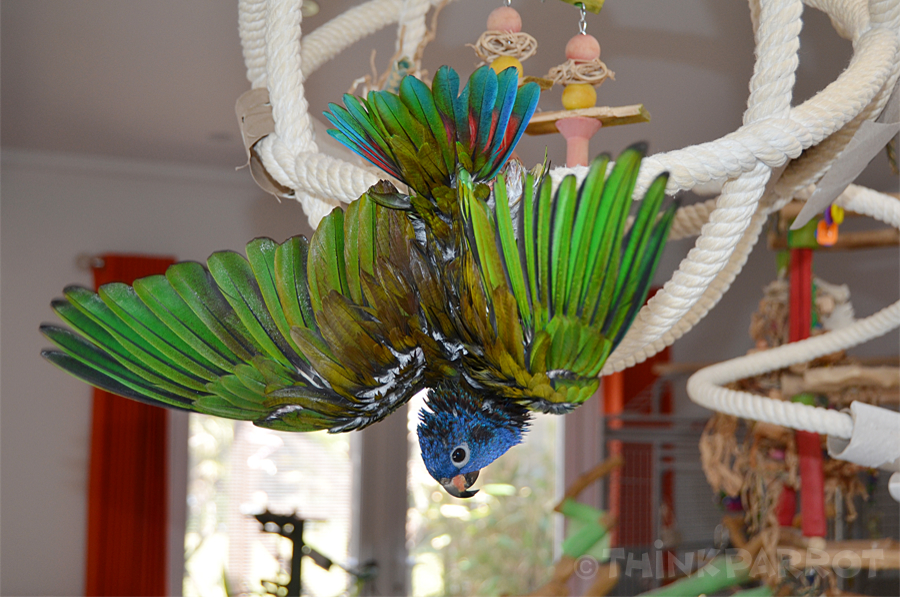
Bath or shower?
Again, individual parrots have different preferences. Some birds love to be sprayed until they are soaked through, others prefer a fine mist. Some birds like to dunk their heads and bodies under a dripping kitchen tap whilst others prefer to clamber in and out of a shallow bowl, or even their cage water bowl. Yet others love bathing in wet leaves or if you are lucky enough to have an aviary (or travel cage), in the rain as nature intended.
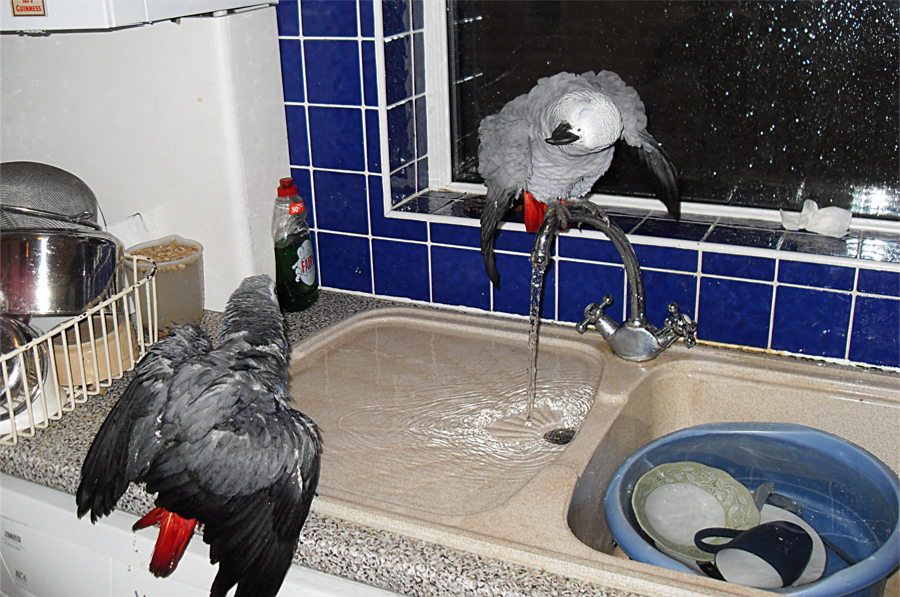
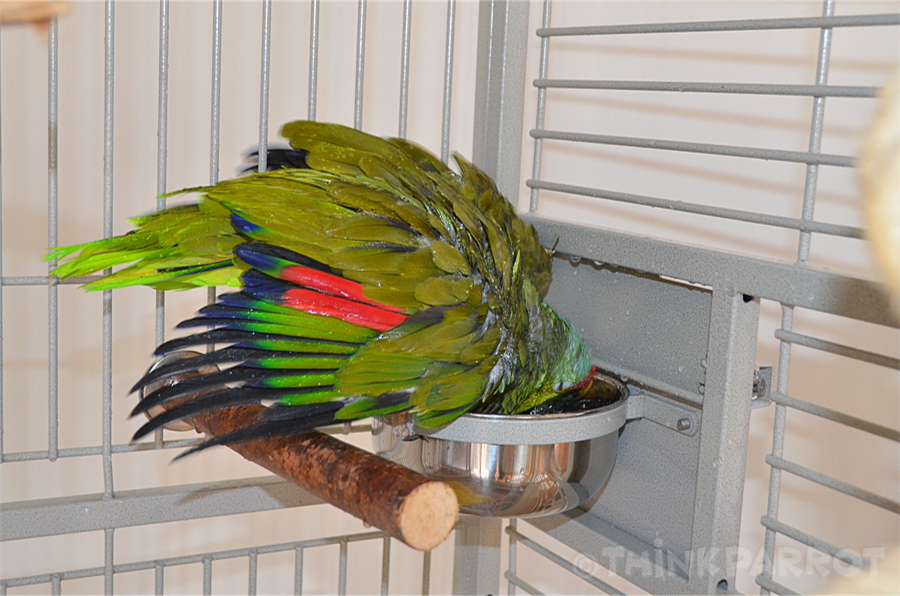
If your parrot decides to bathe in his/her cage water bowl, be sure to change the water immediately afterwards – you’ll be shocked at the dirty and undrinkable water!
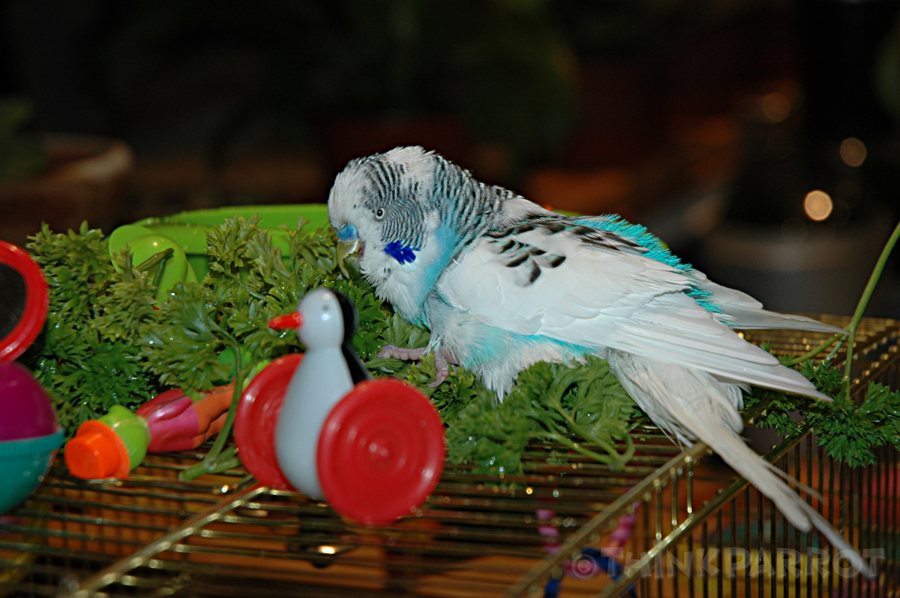
Another option is to take your bird in the shower with you. Make sure the water temperature is tepid and that they can get out of the spray if they want to. But also be aware that chlorine, disinfection by-products and other water pollutants in tap water are vaporised in a steamy shower and can be absorbed by a parrot’s very efficient respiratory system.
In the mood
Try switching on the vacuum cleaner to get your parrot in the mood for a shower. It works wonders! They say the sound is akin to a tropical rainforest downpour. Rain beating down on a conservatory roof, or a running hair dryer can have the same effect.
If you have more than one bird, showering them together (ie. in the same room) tends to encourage the less enthusiastic individuals as they see their flock mates enjoy the experience.
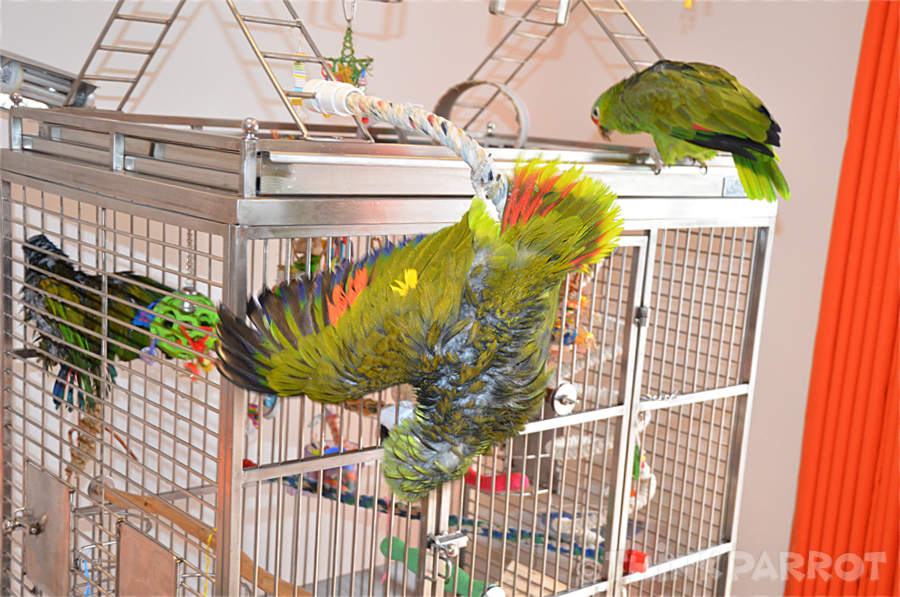
Be enthusiastic about the shower yourself maybe by splashing the bowl with your fingers or whooping it up as you spray!
JoeJoe is used to being sprayed or showering in the rain. He showed no interest in the bowl of water until dandelion flowers were thrown in, and sometimes organic strawberries! You could also try adding leaves or other favourite fruits.
Watch JoeJoe’s first dip in a bowl with dandelions below:
When to bathe/shower?
As often as a bird likes. Daily is great. Weekly will do.
It’s important they bathe/shower regularly through the winter too – central heating dries out the skin and plumage.
Baths/showers in the morning or afternoon allow plenty of time for the bird to dry off properly before going to bed.
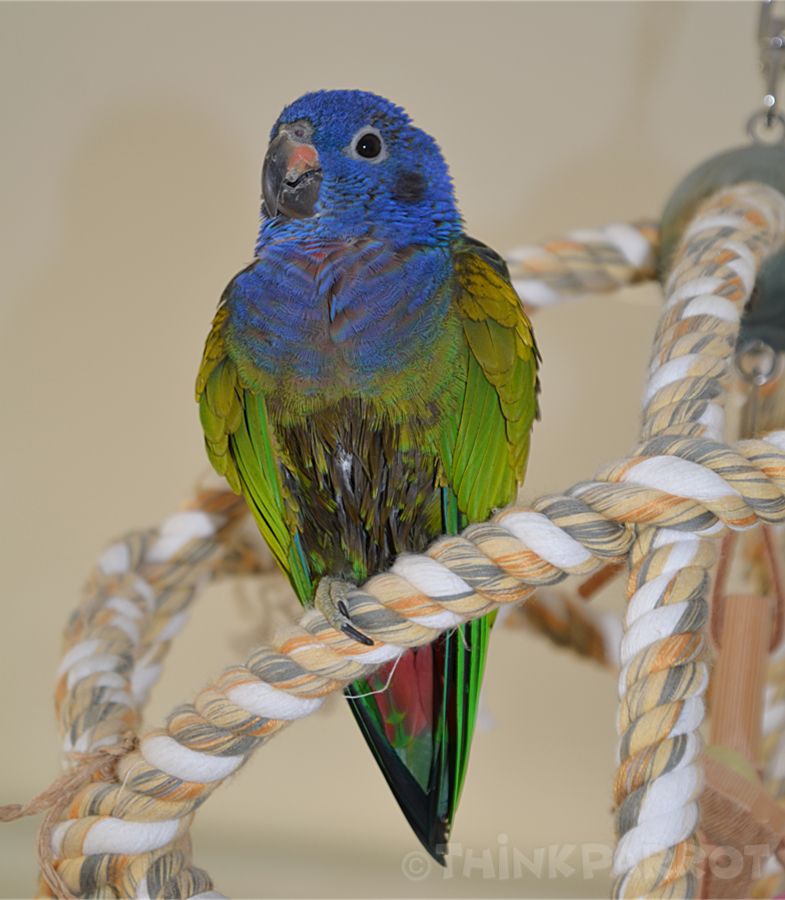
Don’t use a hairdryer to dry your bird. First because they dry out the skin and feathers which defeats the purpose of the shower, and secondly, a hairdryer is often coated inside with PTFE (Teflon) which can give off fumes that can kill a bird if overheated.
How to desensitize a parrot to being sprayed
The trick is not to frighten a bird with the spray. Desensitize him gradually and never use squirting with water as punishment – you don’t want to pair misting with a bad experience!
Spray gently up into the air and let the fine mist land by the side of the bird. He might be a little taken aback at first. Gradually let more of the mist fall back on him. You can even do this with your back to the bird and spray over your shoulder so as not to pair yourself with the mist, as suggested by the late Sally Blanchard. Perhaps leave it there for that first time.
Next time allow more mist to fall back onto the bird. When he’s comfortable with this, then gradually switch to spraying gently, but directly on him. Sometimes I gently spray the body only depending on the bird’s body language and then gradually include the head. As the bird gets used to it, you can increase the strength of the spray depending on the individual. Bobbie likes to be sprayed lightly as did Chico to begin with. JoeJoe and Kobe like to be sprayed harder and get totally drenched.
Above all make it fun!
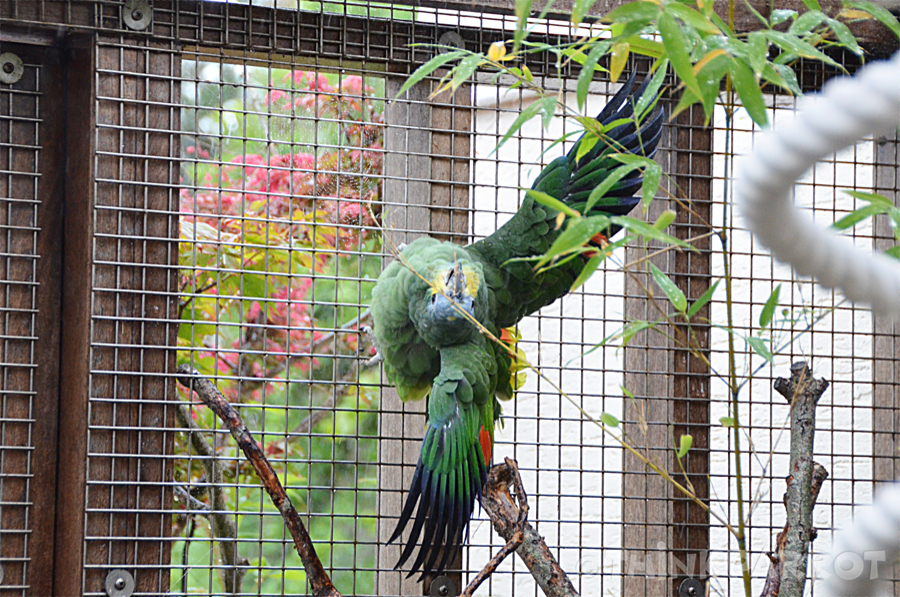
FUN FACT
Green or blue feathers will appear brown when wet, since water stops these colours reflecting light as they should. They’ll return to green and blue when dry.
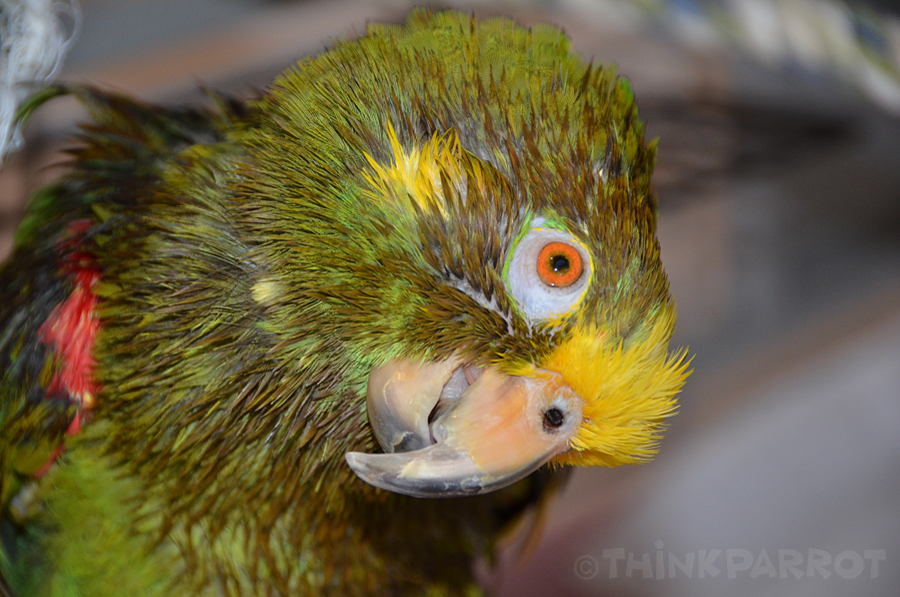
REFERENCES
Companion Parrot Handbook by Sally Blanchard, 2004 Second Edition, published by the PBIC

